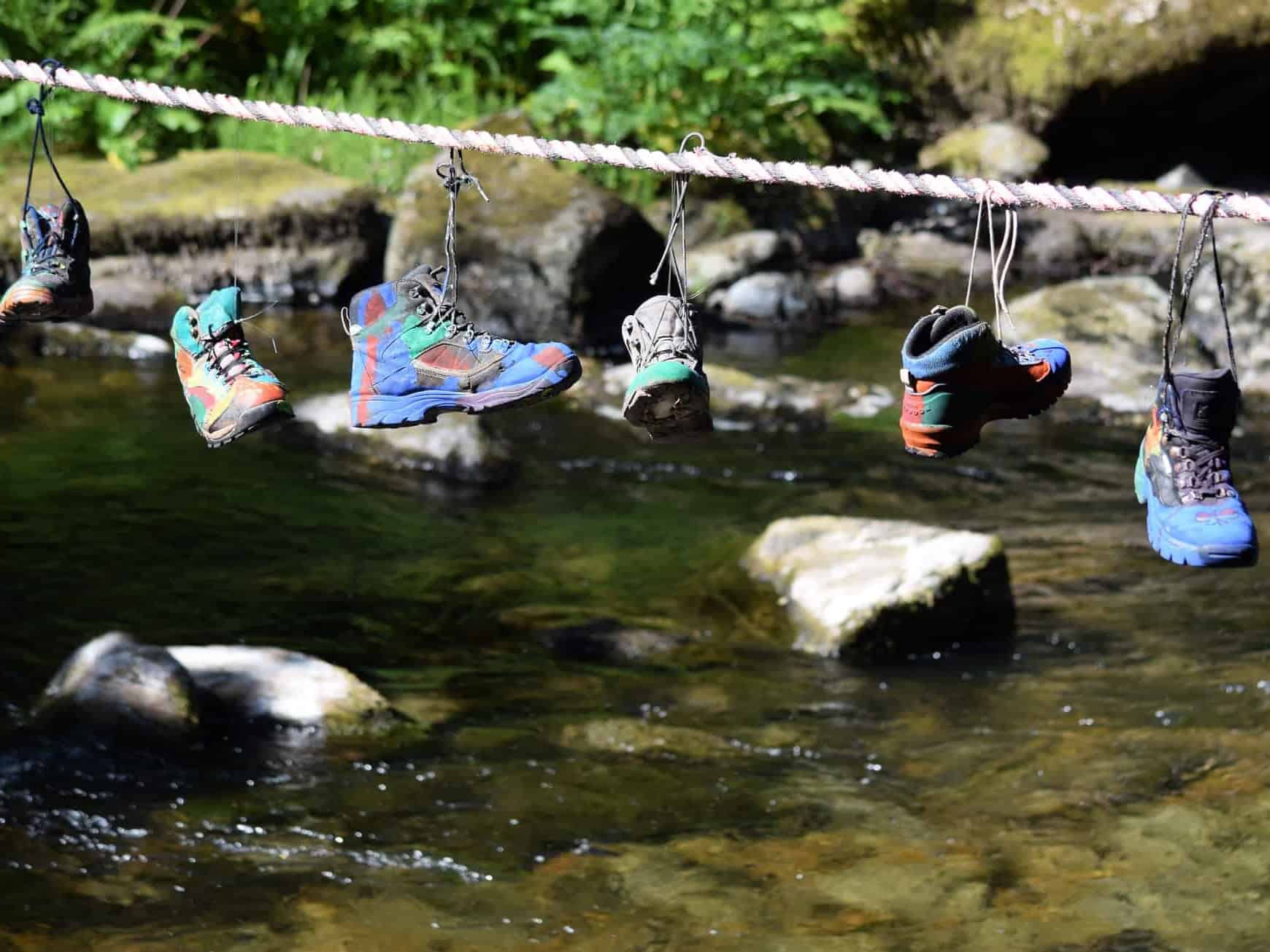As mentioned earlier, it’s extremely important to avoid direct heat from your campfire when drying your boots.
Most hiking boots are made of material that can be damaged by heat. Leather, glues, and synthetic waterproofing material can dry, crack, and even melt. Thus, you shouldn’t expose these to the intense heat of fire.
Instead, the sun is your best bet for a direct source of heat.
It will dry your boots quickly, since you’re getting heat plus air flow. However, if it’s evening and/or overcast, you’ll want to use the other techniques here, like newspaper.
Alternatively, you can prop your boots and insoles at the “safe zone,” of your fire. This safe zone is where you just begin to feel the warmth of the flame. Place your boots with their holes toward the fire.

